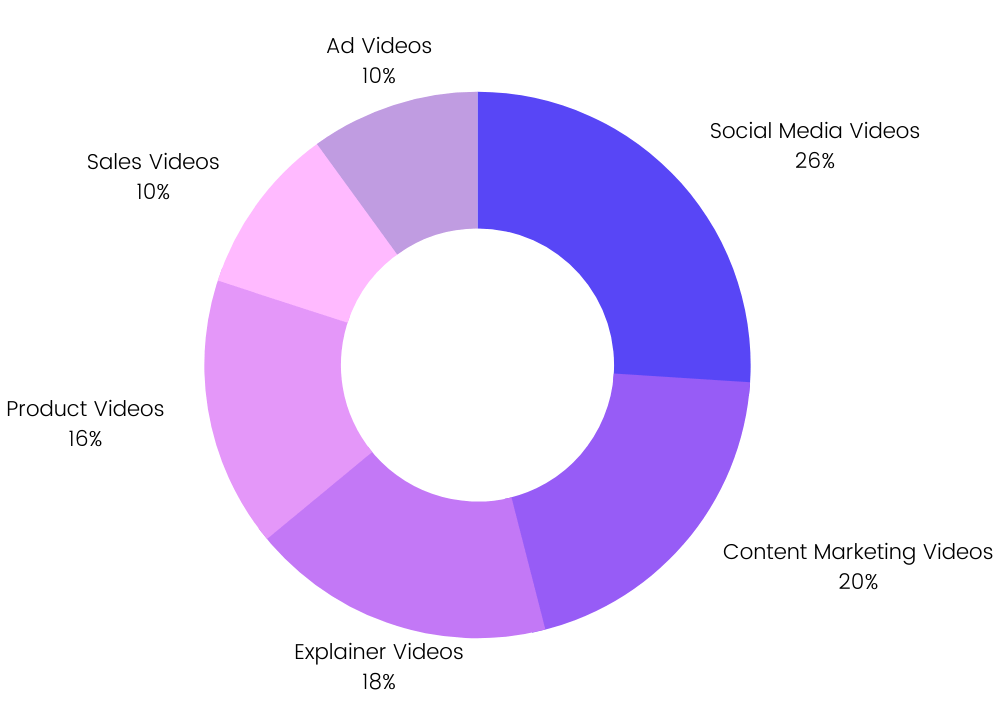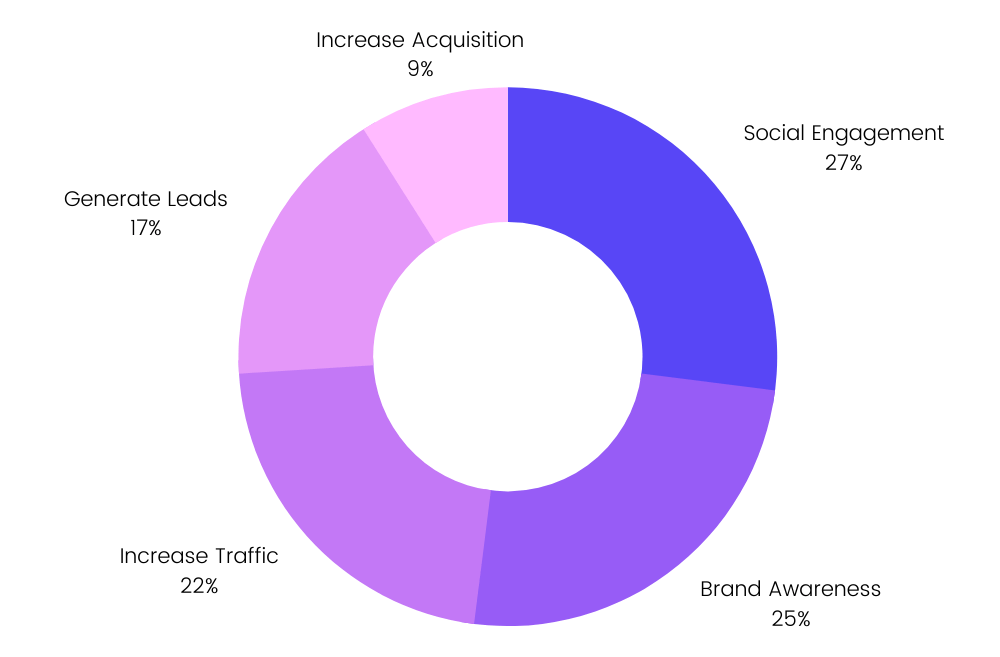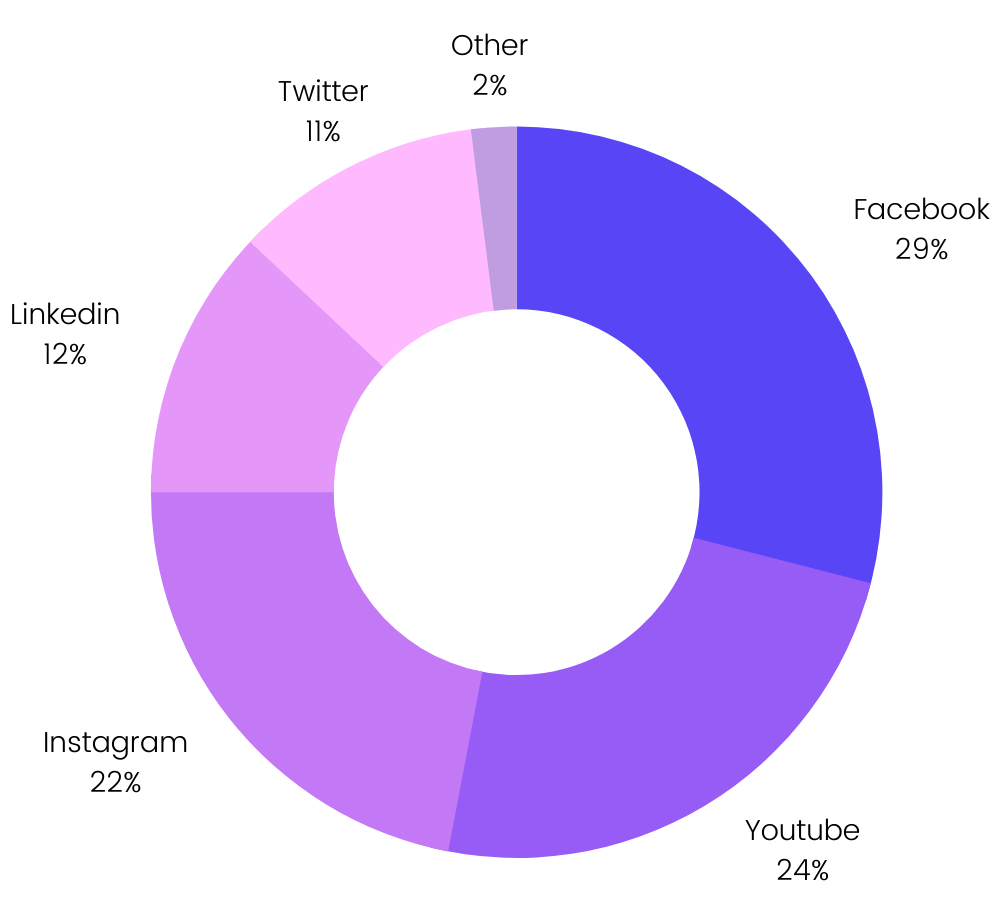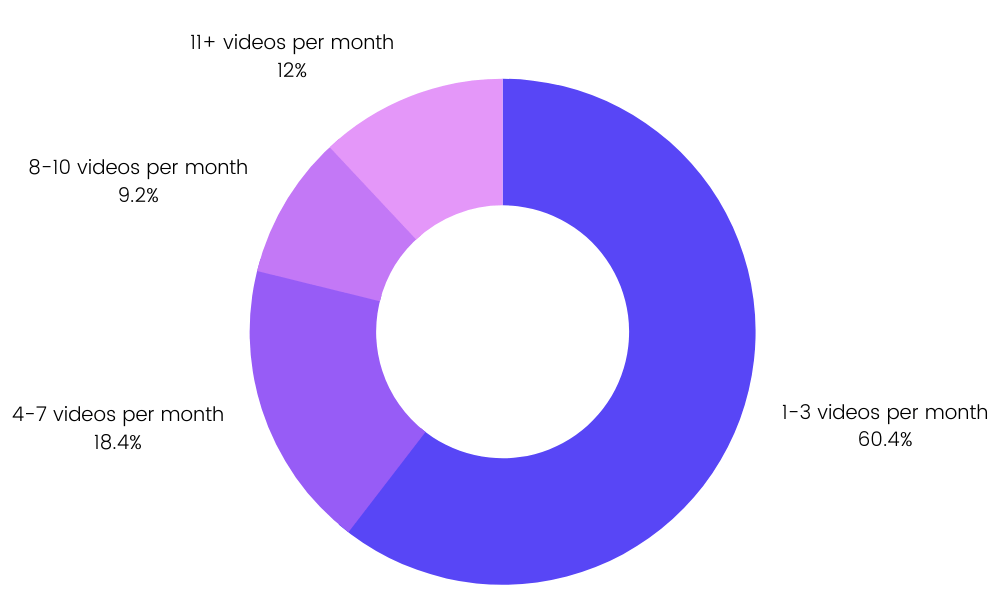
Maybe you’re contemplating investing in video marketing? Or want to uncover more about successful distribution strategies for your video content? You’ve come to the right place. Video marketing in 2021 is a must-do business strategy to help increase your brand awareness, improve conversion rates, and drive social engagement.
Our survey sample was diverse. We surveyed 881 video creators worldwide, including the United States, Australia, Germany, India, Singapore, and the United Kingdom, to name a handful of the countries we collected results from.
We collected results from product marketing managers, performance marketers, content marketers, creative directors — even CTO’s! Industry-wise, our survey aggregate was just as broad. We were lucky enough to obtain data from many businesses, including those in real estate, healthcare, education, design, advertising, and software.
Let’s dive in and uncover the video marketing statistics you need to know for 2021.
Video Marketing Statistics 2021
1. How many people will use video marketing in their business in 2021?

Video marketing is the future
A massive 85.5% of marketers plan on using video in their business strategy in 2021.
We’re seeing video utilized across many different industries, including pharmaceuticals, education, advertising, consulting, financial services, and cosmetics. This signals that video marketing is a strategy that a diverse and eclectic range of businesses are embracing to drive engagement, increase sales, generate leads, and acquire customers.
2. What types of marketing videos do people typically create?
 Social media videos still reign supreme
Social media videos still reign supreme
Perhaps unsurprisingly, social media videos came out on top as the most popular type of videos that people are looking to create in 2021, with content marketing videos a close second. We’re also seeing an overlap between video marketers posting videos on their social media channels and using videos for running ads on those same platforms.
Video is an integral part of any good social media strategy. The visually rich, multi-media format helps to increase the engagement of your marketing campaigns — a core metric when you’re measuring their success. To put that into context, a study by Mention found that video posts on Instagram generally receive an average of 150 comments, compared to static image’s 65 comments. Additionally, it’s been long-touted that Tweets that contain video generate 10x engagement rates.
Not convinced? When Lumen5 conducted a test between the use of static images and videos across multiple ad platforms, we found that video ads saw over 3x more engagement than static image ads, showing that video is a winning method to help increase your brand’s profile on social media.
We see businesses worldwide utilize videos across social media campaigns, landing pages, adverts, and sales collateral to increase engagement, brand awareness, traffic, and acquisition. Video marketing is clearly here to stay.
3. How does video marketing help a business?

Video marketing helps a business achieve its goals
According to our survey, the most popular way video creators utilize video is to improve social engagement, which ever-so-slightly edged out increasing brand awareness and traffic. From these results, we can see that video marketing directly helps a business achieve its goals by impacting each stage of the marketing funnel — from increasing brand awareness at the top, generating leads in the middle, and increasing acquisition at the bottom of the funnel.
If you’re not confident in implementing a video strategy across your entire funnel, start by creating top-of-funnel brand awareness videos. This video style works well on social media for driving engagement, therefore increasing your brand profile and getting more eyes on your business.
4. What social media channels do people share videos on?

Facebook wins for video content distribution
If you work in marketing, you’ll understand the importance of a solid distribution strategy to get eyes on your content and achieve your goals. According to our research, social media is the go-to distribution channel for video content, with Facebook being the most popular platform for distribution with 29% of our respondents using the social giant to share videos, closely followed by Instagram (22%), YouTube (24%), LinkedIn (12%), and Twitter (11%).
A good video distribution strategy will empower your business to share video content on the social media channels where your audience hangs out the most. If you’re a B2B marketer, this might be LinkedIn; if you’re a B2C company targeting Gen Z, your videos might get more engagement on TikTok. Smart social media marketing and video distribution is about playing to your strengths — not following the crowd.
Each social media platform typically responds differently to styles of video content, but here are some general rules to follow when creating videos for social media:
-
- Keep it short, snappy, and succinct. You’re not remaking the Godfather here. Your audience wants content that they can engage with on the fly. Aim for a video length of under 90 seconds.
- Pique interest. The first few seconds of your video needs to hook the audience. Consider positioning your most gripping information or message at the beginning of your content to generate continuing interest in your video.
- Always go native. Upload your video directly to your chosen social media platform — don’t share or embed a URL link. Native upload lets you measure the performance of your video.
- Include a CTA. A solid call to action (CTA) will guide your viewer to the next step of engaging with your brand.
- Measure your success. Measuring how your video performed will give you valuable insights into what worked, what didn’t work, and what you need to do next time to see results.
5. How important is the use of video in business?
 Video content is king
Video content is king
A massive 93.4% of people said that video marketing is very or somewhat important to their business. This signals that most of our video creators understand the importance of video marketing as a go-to strategy to increase brand awareness, drive authentic engagement, and improve leads and acquisition numbers.
Not embraced the benefits of video marketing just yet? Sign up to Lumen5 for free to get started creating thumb-stopping video content for your campaigns.
6. How many times per month do people post video content on social channels?

Low-frequency video distribution is key
According to our research, 60.4% of marketers post video content on their social channels 1-3 times per month. However, what works for one business might not work for another. Keep in mind that each business is unique. It’s more important to understand your customers, provide a clear message, and test different posting times to find the most effective cadence for your use case.
7. Do you feel that video marketing gives you a positive return on investment?

Video gives marketers a positive ROI
Of the video creators who measure ROI on video marketing campaigns, nine out of ten people see a positive return on investment. We also found out that 23.7% of our survey size didn’t measure ROI. If you think you need to improve on measuring video marketing performance, check out our handy article on which video analytics to keep track of — especially if you’re in the B2B space.
Remember that you’ll want to measure the relevant metric to analyze your ROI for each video marketing campaign you launch. For example, video ads will need to measure ROAS. In contrast, a top-of-funnel brand awareness campaign will measure engagement metrics such as views, clicks, and comments, rather than revenue-related metrics.
“As we move into 2021, we continue to track the ongoing trend towards widespread adoption of video content as the preferred method for both external and internal communications. In part due to the pandemic, we have seen the speed of video adoption further accelerated as businesses and consumers rely more heavily than ever before on digital communications.
Our research continues to reinforce our belief that video serves as an extremely flexible tool to help achieve a plethora of goals across social engagement, customer acquisition, lead generation, traffic increase, brand awareness, and more. The effectiveness of video is fueled by the fact that digital audiences expect engaging video content from brands of all industries.
Gone are the days where plain text updates and static images reigned supreme. Brands looking to win today’s market will need to figure out how to win attention across an increasingly diverse digital landscape across Facebook, YouTube, Instagram, LinkedIn, Twitter, and surely more platforms to emerge in the coming years.” — Mike Cheng, CEO at Lumen5.
Whether you’ve been considering implementing video marketing as part of your business strategy, or you’re a seasoned video marketer — there’s no denying that video marketing is the future and here to stay.
Sign up to Lumen5 to create engaging video content that drives brand awareness, creates engagement, and increases leads and revenue.






